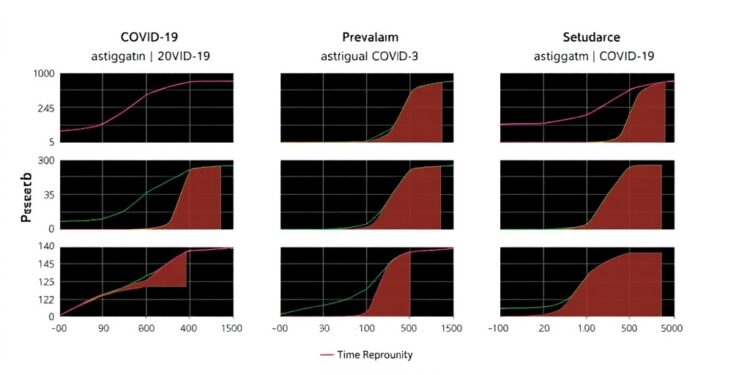
In the wake of the COVID-19 pandemic, a remarkable shift has been observed in various aspects of daily life, and recent studies have revealed significant implications for pediatric health. One of the most striking findings is the increase in the prevalence and severity of astigmatism among children, which may be linked to lifestyle changes during the pandemic. This eye condition, characterized by the cornea’s irregular curvature, can significantly affect vision and development, making it a concerning public health issue.
The study highlights that while many children adapted to new routines, their environmental exposures may have altered in ways that contribute to corneal development issues. With extended indoor screen time, reduced outdoor activities, and changes in visual habits, the delicate balance involved in eye development appears to have been disrupted. These factors could potentially interact with genetic predispositions, exacerbating the occurrence of astigmatism.
Detailed analyses suggested a correlation between the time spent on screens and the severity of astigmatism, indicating that children who engaged more heavily with digital devices were more likely to experience vision problems. This situation calls for urgent attention as the implications for learning and development could be profound. Research emphasizes the importance of balancing screen time with outdoor activities, advocating for a holistic approach to maintaining eye health in young populations.
Moreover, the study delves into the underlying pathophysiology of astigmatism, providing a deeper understanding of how lifestyle factors intertwine with genetic influences. The cornea’s development is a complex process influenced by both biological and environmental factors, and the research aims to unravel these interactions. The findings underscore the necessity of continued investigations into how environmental stresses, particularly those induced by the pandemic, can alter the physiological development of essential structures in the eye.
As lifestyle changes become increasingly relevant in understanding public health trends, researchers may consider incorporating broader variables into their studies. Assessing not just screen time but also the overall quality of children’s environmental exposures could help identify preventive measures and effective strategies. By exploring these connections, public health initiatives can better address the increasing prevalence of vision disorders in children, providing insight into effective interventions.
Understanding the relationship between lifestyle factors post-pandemic and eye health is crucial for developing targeted educational programs for parents and caregivers. Raising awareness about the risks associated with prolonged screen exposure and promoting regular eye exams could significantly contribute to early detection and treatment of astigmatism. Furthermore, community health campaigns could encourage outdoor activities that promote eye health, particularly in the formative years of a child’s development.
The gravity of astigmatism and its implications for children cannot be overstated. Visual impairments can hinder academic performance and overall quality of life, which further supports the need for comprehensive research efforts. Through collaborative studies and interdisciplinary approaches, researchers can begin to forge a better understanding of how lifestyle and environmental factors play a role in ocular health and broader concerns such as child development.
As the scientific community continues to study these pressing issues, implications for future research are clear. There is a strong need to look at lifestyle modifications that families can implement to mitigate risk factors associated with vision problems. Encouraging regular check-ups with ophthalmologists and eye care professionals can pave the way for preventive care, ensuring that children develop into healthy adults with optimal vision.
Further research into the intersection of childhood health, environment, and vision will help shape public health policies geared toward future generations. By addressing these concerns, society can work toward eliminating or reducing the incidence of astigmatism among children and safeguarding their visual health.
Finally, the ongoing dialogue between researchers, healthcare professionals, and communities is vital in transforming this data into actionable strategies. The findings from this study should serve as a catalyst for further investigations, deeper understanding, and meaningful actions directed at protecting our children’s vision in a rapidly changing world.
In summary, as we continue to move beyond the pandemic, it is essential to integrate these findings into our collective understanding of childhood development and health, ensuring that we prioritize healthier lifestyles and environments for future generations.
Subject of Research: The impact of lifestyle changes after the pandemic on child astigmatism.
Article Title: Post-Pandemic Lifestyle Changes and Their Impact on Child Astigmatism.
News Publication Date: TBD
Web References: TBD
References: TBD
Image Credits: TBD
Keywords: Astigmatism, Pediatric Health, COVID-19, Eye Development, Environmental Factors, Vision Health, Public Health, Screen Time, Outdoor Activities, Corneal Development, Child Development.
Tags: balance of screen time and outdoor playchildren’s eye health during pandemiccorneal curvature irregularities in childrenCOVID-19 impact on pediatric healthdigital device usage and astigmatism severitygenetic predispositions and astigmatismimplications of astigmatism on learning and developmentincrease in astigmatism prevalence in childrenindoor screen time and vision problemslifestyle changes affecting eye healthoutdoor activities and eye developmentpublic health concerns related to vision





